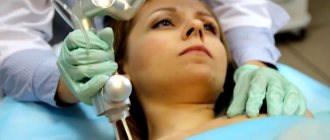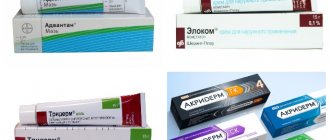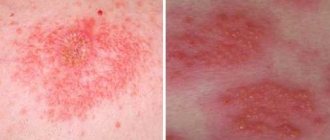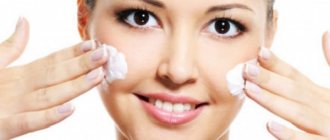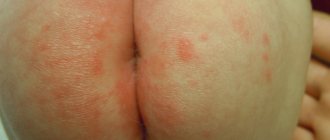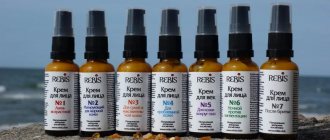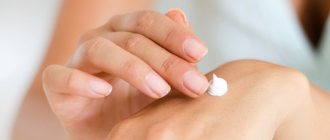External medicines.
Ointment, cream or gel are external medications that are used in modern medicine for various diseases. Today we will analyze one medicinal group - these are external agents used to treat diseases of the musculoskeletal system: osteochondrosis, arthritis, arthrosis, etc.
The most commonly used treatments for these diseases are:
- PAIN RELIEF ANTI-INFLAMMATORY MEDICINES are external medications that contain the active ingredients diclofenac, nimesulide, ketoprofen, ibuprofen, etc. They relieve inflammation, swelling and redness well. Significantly reduce joint pain and morning stiffness. You can read more about this group of drugs in this article - NSAIDs.
- HEATING PRODUCTS – external medications, the therapeutic effect of which is due to local irritation of skin receptors. By dilating blood vessels and increasing blood flow, nutrition of the affected joints improves, all metabolic processes are normalized and the patient’s condition significantly improves. As a rule, these ointments contain medicinal substances: capsaicin, nicoboxil, bee venom, snake venom, fir oil, clove oil, turpentine and others.
Very often, pharmacy visitors cannot decide what to buy: ointment, cream or gel. What is the difference between them and which helps better? So…
What is the difference between gel and sol?
The difference between a gel and a sol is that a sol is a dispersed system, which is a cross between a homogeneous system - a solution, and a heterogeneous system - an emulsion or suspension, and a gel is the final product of the transformation of the sol.
The gelling agent particles are in water—this system is a sol. When the gelling agent particles swelled due to interaction with water molecules, a gel was formed.
Sol is more of a literary term to denote the classification of dispersed systems. Gel is its practical embodiment.
What helps better: ointment, cream or gel?
To answer this question, it is necessary to find out what is their difference.
- OINTMENT is a dosage form, the basis of which is fat or a fat-like substance. The ointment contains no water at all. When applied to the skin, the ointment forms a film that helps create a greenhouse effect. Thanks to it, the active substance penetrates deeper into the layers of the skin, enters the bloodstream and affects the entire body as a whole. The ointment is slowly absorbed, but has a longer lasting effect. It is applied to dry, rough skin, seals, scars. Bandages with ointment give very good results. They increase the depth of penetration and the duration of the therapeutic effect. The only disadvantage of the ointment is that it is difficult to wash off with water and can leave greasy stains on clothes.
- CREAM - differs from ointments in the content of water in the fat base. The cream is absorbed quickly enough, but is not able to penetrate deeply into the tissue. The drug substance is retained in the upper layers of the skin, practically not entering the bloodstream. Do not apply the cream to dry, rough skin, as the effect of such treatment will be minimal. Due to their low penetrating ability, drugs for the treatment of joint diseases in the form of cream are practically not produced. It is worth noting that after applying the cream to the skin, you need to wait some time for the cream to be completely absorbed. If you put on clothes immediately after applying the cream, it, like ointment, can leave greasy marks on clothes.
- GEL is a transparent or translucent substance that does not contain any fats or oils. The acid-base indicators of the gel are very close to those of the skin, which is very important. The gel is evenly distributed on the skin, quickly absorbed and does not clog pores, unlike ointment. Many medicines in the form of gels have higher therapeutic activity than ointments and creams. They release active substances more easily, so they cope more effectively with inflammation and pain in the joints. Currently, most external remedies for the treatment of joint diseases are produced in the form of gels. And it’s clear why, because the gel penetrates the skin better than ointment or cream. The gel is also convenient because it does not leave greasy marks on clothes, and therefore it can be applied to the skin at any time.
Ask a question or leave a comment
Hello colleagues! In the previous material on the topic of ointments, we looked at their classification. Today we will take a closer look at cream as the most common type of ointment in modern pharmacy.
Cream
is a soft dosage form for external use, which is a two- or multiphase disperse system, the dispersion medium of which, at a set storage temperature, usually has a Newtonian type of flow and low values of rheological parameters. There are creams of the "oil/water" and "water/oil" types. In the first case, a small amount of oil is distributed in a significant amount of water; in the second, on the contrary, a relatively small amount of water is distributed in the bulk of the oil (fat).
Properties of creams
To illustrate the properties of creams, we can turn to a natural emulsion that is familiar to us from birth - milk. Regular milk is an emulsion of animal fat in a concentration of up to 6% in water. If you remove part of the water from milk and increase the amount of fat to 10–20%, you will get sour cream, which will be an “oil/water” cream. It is still successfully used in the treatment of sunburn. If you continue to remove the water phase from sour cream, you end up with butter with a fat content of 72%. And then, in this case, we have a water/oil system. Another widely used emulsion is mayonnaise. If you look at its composition, you will find that this product is an emulsion of vegetable oil (76%) in the aqueous phase.
In both the first and second cases, oil is present in the systems. It performs several important functions:
- Technological
– creates the internal frame of the cream; drops of oil provide the viscous-plastic properties of the cream. - Pharmacological
- if the oil has any pharmacological properties, it can be used as an active substance that provides a therapeutic effect. - Auxiliary
- acts as a solvent for dermatotropic ingredients.
More recently, creams (ointments), as a rule, consisted of one substance and an ointment base - Vaseline. Today, cream is a multicomponent mixture of substances designed to guarantee its high efficiency and stability. To ensure these properties, in addition to pharmaceutical substances, a lipophilic phase (vaseline oil or lipophilic complexes), emulsifiers, co-emulsifiers, structure formers, solvents and substances that increase the solubility of poorly soluble substances, plasticizers, hydrants, preservatives, and antioxidants are used.
In the next article in our series on ointments, we will look at the main components of creams.
Konstantin Sergeevich Guzev, Doctor of Pharmaceutical Sciences, authorized person of Retinoids JSC
or leave a comment
Seal
What to choose for back or joint pain?
What to choose for back or joint pain: ointment, cream or gel? It all depends on the situation. If you need to relieve pain quickly, it is better to use a gel. It is absorbed into the skin faster, and therefore will also begin to act faster. If you need to provide a longer analgesic effect, relieve inflammation, ointment is preferable. The ointment works especially well under a bandage. But it is better not to use creams, since the effect of their use is minimal.
In any case, when choosing a medicine, pay attention to the packaging and read the instructions. For example, more modern drugs solve several problems at once. Some gel-like preparations (Voltaren, Traumeel) combine components that can not only penetrate into the deep layers of the skin, but also provide a fairly long-term analgesic and anti-inflammatory effect.
What is the difference between serum and cream?
The main difference between serum and cream is its liquid consistency.
Serum is a liquid cosmetic product that contains a high concentration of active ingredients.
Few people know that using serum as an independent product is inappropriate without applying cream. The serum is applied after cleansing and toning the skin. The components of the serum penetrate into the upper layers of the skin. But the serum is liquid and without a top coat it will quickly evaporate.
In addition, washing away the impurities and the entire lipid barrier of the skin by washing helps better penetration of the serum, but the natural protective barrier of the skin must be restored by applying cream. Otherwise, unprotected skin will attract impurities to the sticky surface of the serum, which will adversely affect the condition of the skin itself.
There are concentrated products; when used, there is no need to use serum.
Why does an ointment, cream or gel help “thin” people better than “overweight” people?
A very important feature characteristic of topical drugs is the ability of the drug to penetrate the affected area. The deeper and better the ointment, cream or gel penetrates into the skin, the better this product helps.
For example, slender people may experience better results from the use of painkillers or warming ointments, while excess subcutaneous fat in obese patients may interfere with the quality penetration of external agents. Excessive fat is a kind of barrier to the penetration of medicinal substances to the diseased area.
The most pronounced effect is the use of external agents for cervical osteochondrosis. Almost immediately after applying the ointment, the patient experiences an increase in motor activity and improvement in condition. This is also due to the fact that the skin and fat layer in the cervical region is thinner, which makes it easier for the therapeutic components of the ointment to reach the site of inflammation. In addition, there are more vessels, capillaries and nerve endings located on a person’s neck than, for example, in the lumbar region.
Modern medicine has a large number of external medications used to treat joint or back pain. Which one helps better is difficult to answer. The human body is individual. And if an ointment, cream or gel helps one person well, then it may not help another. Everyone chooses for themselves what suits them.
All medications have contraindications, so before using them you should consult a specialist.
Be healthy!
How is a paste different from an ointment?
The difference between a paste and an ointment is that the paste has a larger mass fraction of crushed solids than can be in the ointment.
Paste is a soft dosage form containing 25% or more finely ground solid active substance.
A typical example is Zinc paste and Salicylic-Zinc paste.
Composition of zinc paste:
- Zinc oxide - 25 grams (active ingredient);
- Starch - 25 grams (excipient);
- Vaseline 50 grams (excipient).
Composition of salicylic-zinc paste:
- Zinc oxide - 25 grams (active ingredient);
- Salicylic acid - 2 grams (active ingredient);
- Starch - 25 grams (excipient);
- Vaseline 48 grams (excipient).
What is the difference between cream and gel?
Cream differs from gel mainly in the presence of a fatty component (oils and other fats). Gel is an independent system, cream is a complex combined system containing an emulsion. There is an intermediate product between gel and cream, it is called Emulgel. The dosage form of the emulgel has absorbed all the advantages of the emulsion and gel - it has become possible to include fatty or fat-soluble components in the gel composition. A typical example is Voltaren Emulgel.
We do not advertise specific medicinal brands! All examples are provided solely for clarity and better understanding of the material.
An analogue of the emulgel dosage form in cosmetics is jelly for the face.
Pharmacological groups of drugs for arthrosis
In the treatment of osteoarthritis with drugs, there are several therapeutic directions - relieving pain and inflammation, restoring blood supply and nutrition to joints, eliminating spasms.
Nonsteroidal anti-inflammatory drugs for the treatment of arthrosis
Non-hormonal anti-inflammatory drugs for arthrosis have a mild therapeutic effect and are prescribed at all stages of the disease. The dosage and duration of the course of NSAIDs is determined by the doctor, since the drugs can have side effects on internal organs (contraindicated in acute and chronic diseases of the gastrointestinal tract, liver and kidneys).. To prevent them. , together with non-steroidal anti-inflammatory drugs for the treatment of arthrosis, omeprazole (capsules) is prescribed. You can only take these medications with water.
What drugs help with arthrosis?
- Nimesil (powder for suspension). Gives a quick effect within 3-4 hours after administration, effectively relieves pain and relieves inflammation. One of the best drugs for the treatment of arthrosis.
- Ibuprofen (tablets, ointment, injections). Has minimal impact on internal organs and blood vessels.
- Meloxicam, movalis, amelotex (tablets, injections, gel). The most gentle remedy for the digestive system among non-steroidal anti-inflammatory drugs for the treatment of arthrosis. Not recommended for heart patients.
- Piroxicam (tablets, capsules, ointment, gel). Quickly relieves pain and inflammation. Aggressive to gastrointestinal mucous membranes.
- Indomethacin (tablets, ointment, suppositories). Effectively relieves pain, but before use you need to read the list of contraindications. Aggressive to gastrointestinal mucous membranes.
- Ketoprofen (tablets, injections, gel, ointment, spray). Relieves pain and inflammation, eliminates swelling and morning stiffness of joints. It has high bioavailability (about 90%). The anti-inflammatory effect of the treatment of joint arthrosis with the drug reaches its peak on the 7th day of administration.
- Diclofenac (tablets, ointment, gel). One of the most accessible and popular NSAIDs. However, it has a number of contraindications. Treatment of arthrosis with drugs containing diclofenac is effective for arthrosis-arthritis.
Glucocorticoid drugs for arthrosis
Corticosteroid drugs for joint arthrosis are potent drugs with serious side effects (they affect the condition of the skin and endocrine system, and the functioning of internal organs). Therefore, for the treatment of arthrosis, the doctor always chooses the minimum therapeutic dose. Uncontrolled and prolonged use of glucocorticoid anti-inflammatory drugs for arthrosis will only worsen the condition of the joints and the body as a whole.
The course of treatment with corticosteroids is up to 10 days, no more than 2-3 times a year (IV, IM or IM). Significant relief of pain and inflammation occurs within 1-2 days after the first dose of the drugs, and the effect lasts from 1 week to a month.
Doctors prescribe the following injectable drugs for the treatment of arthrosis:
- Hydrocortisone.
- Prednisolone.
- Methylprednisolone.
- Triamcinolone.
- Diprospan.
- Betamethasone.
Chondroprotectors and reparants
This group of drugs for the treatment of arthrosis supplies the body with nutrients to restore the joint. Chondroprotectors require long-term use, but provide stable remission. They help fight pain and inflammation not symptomatically, but directly affect the condition of the joint.
Among the most effective drugs for arthrosis, doctors and patients call:
- Artracam (powder). A preparation based on glucosamine sulfate from shrimp and shellfish. Well tolerated and absorbed by the body, compatible with NSAIDs. Normalizes the production of enzymes in articular cartilage, increases the strength of the cartilage lining and the production of synovial fluid. Course: 1 sachet daily for 6 weeks. If necessary, the course can be repeated after 2 months.
- Alflutop (injections). Extract of four species of marine fish for intramuscular and intramuscular administration. Improves the quality of cartilage and joint fluid, stimulates the production of hyaluronic acid. Reduces pain and discomfort, inhibits the progression of the disease. Course: 20 intramuscular injections daily or 5-6 intramuscular injections every 3-4 days.
- Artra (tablets). Glucosamine and chondroitin sulfate. Course: 1 tablet twice a day in the first 3 weeks, after which 1 tablet daily. Course duration: 6 months. The effect after taking lasts up to 2 years.
- Structum (capsules). Chondroitin sulfate. The course lasts from 3 to 6 months. (1-2 capsules 2 times a day). The effect after treating joint arthrosis with the drug lasts 3-5 months. The drug accumulates in the synovial fluid. It has average bioavailability (about 13% compared to 26% of the drug artracam).
- Chondroitin Complex (capsules). Chondroitin and glucosamine sulfate. Stimulates the regeneration of articular cartilage and slows down degenerative processes. Reduces the need to take NSAIDs. Bioavailability is about 13%. Course: 3 capsules per day in the first 3 weeks, then 2 capsules per day for 2-3 months.
- Chondroitin ointment. Helps relieve inflammation and normalize calcium phosphate metabolism in joints, inhibiting the development of the disease. Course: 2-3 weeks (can be repeated). The ointment should be applied to the skin over the affected joint in a thin layer 2-3 times a day and rubbed in.
Chondroprotectors and stimulators of cartilage tissue regeneration also include drugs for arthrosis with hyaluronic acid:
- Synocrom.
- Ostenil.
- Synvisc.
These agents are injected directly into the joint cavity to protect the cartilage from abrasion and drying out. Hyaluronic acid is also a building material for connective cartilage tissue (cell membranes are made of it). The introduction of hyaluronic acid is recommended for patients whose synovial fluid analysis has revealed its insufficient viscosity or poor composition. The continuous effect after one injection lasts from 3 months to 1 year.
Injectable chondroprotectors trigger rapid restoration of the cartilage surface, increase the range of motion in the joint and relieve pain after the first injection.
The mentioned drugs for arthrosis are also used in cases where NSAIDs are contraindicated for patients. That is, there are severe disturbances in the functioning of the cardiovascular system: coronary disease, angina pectoris, hypertension, risk of heart attack/stroke, or a history of such. Or problems with the gastrointestinal tract: ulcers, colitis, gastritis, gastroduodenitis, intestinal erosion and others. The doctor can completely replace NSAIDs with hyaluronic acid during a course of glucocorticoid drugs for the treatment of arthrosis.
Warming and locally irritating drugs for arthrosis
Warming preparations for the treatment of arthrosis include ointments, gels, balms and aerosols. These forms of release do not have any fundamental differences in application and effectiveness.
This group of drugs for arthrosis stimulates blood circulation in the periarticular area and improves nutrition of the joints, helps eliminate swelling and discomfort, and has a beneficial effect on joint mobility (especially in the presence of morning stiffness). In the absence of allergic reactions, these drugs can be used up to 6 times a day.
- Capsicam and espol (ointments), capsicum (spray). Warming ointments based on hot pepper extract are a completely natural remedy with instant action.
- Nicoflex (ointment). Also contains capsaicin, an irritating component of red peppers.
- Nayatox (ointment). A drug for the treatment of arthrosis based on cobra venom.
- Viprosal (ointment). A drug based on viper venom.
- Apizartron (ointment). A preparation based on bee venom.
Locally irritating drugs for arthrosis cannot be used for lesions and damage to the skin.
Antispasmodic drugs for arthrosis
Drugs to eliminate musculoskeletal spasms in the treatment of osteoarthritis are used to alleviate the patient’s condition and restore normal tissue trophism. Taking antispasmodics significantly reduces pain and prevents muscle destruction (characteristic of arthrosis dystrophy).
- Mydocalm (tablets, injections).
- Baclofen (tablets).
- Sirdalud (tablets).
- Tolperisone (tablets, injections).
- Drotaverine, no-spa (tablets, injections).
As a rule, these drugs for arthrosis are taken as needed. If spasticity is present, the course of treatment is 10-15 days. It is better to stop taking antispasmodics for diseases of the central nervous system and eyes.
What is a gel?
Gels do not include fats or ointments. They are characterized by a soft and viscous consistency and are water-based. An important feature of the gel is that its active component, as a rule, is completely dissolved in the base.
Since this form of preparation has a completely non-greasy consistency, the composition is easily washed off the skin and can be easily washed off clothes. In addition, in terms of pH level, gels are closest to the acidity of healthy dermis. Therefore, this form of release is considered the most physiological. Its additional advantage is the absence of clogging of pores. In addition, the gel is instantly distributed over the skin.
